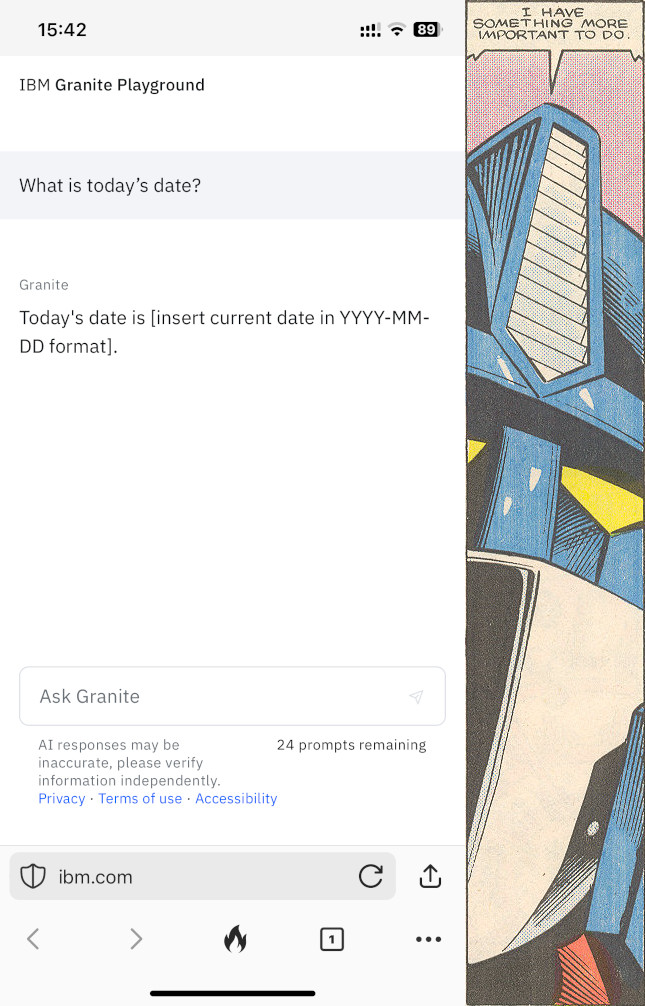

Ironically SeaMonkey, the continuation of Mozilla Suite, seems lighter than Firefox.


Ironically SeaMonkey, the continuation of Mozilla Suite, seems lighter than Firefox.
I’d have answered the same. Burning so much energy to know what date it is deserves a snarky response.



See this: https://github.com/chenxiaolong/avbroot/issues/299
The issue with the Pixel seems to be a a build-up of static in the LCD.
I will conveniently avoid any dbus talk, because the why is not so interesting as the how and direct you to this path /var/run/wpa_supplicant. You would probably send SCAN_RESULTS on the socket, you could also initiate a SCAN first to include the strength of stations you’re not connected to. If you want deeper access to wireless, you use netlink to communicate with the kernel (see /usr/include/linux/nl80211.h) and poke some NL80211_STA_INFOs… or the other direction (everything is a file) you just parse /proc/net/wireless without any special permissions for the current signal strength.
Oh… and btw dbus has a simple binary protocol underneath all the XML/interface fluff and uses a UNIX socket.
Yes, use what you know. Neither LXLE nor LXDE are end of life as claimed in other comments. The latest LXLE release is supported until 2030, which is five years longer than Windows 10.
Fontunately it’s just DNS.
Loop up the domains at one of: ns1.cloudns.net ns2.cloudns.net ns3.cloudns.net ns4.cloudns.net


My best guess is that you forgot the -f parameter to qemu-img.


You are giving me the impression that Waypipe is an extension to Wayland like XRANDR is to the X11 protocol. I didn’t get that impression from the blogpost. I’m not trying to place value on them being an extension or a separate tool. I’m just trying to figure out if it was a shortheaded response or if Waypipe is an extension to the Wayland protocol.
An AppImage can be sandboxed.


Just to clarify. The gi:// resources are GObject Introspection modules which are used for multilanguage bindings to native libraries. On my system, GI modules are found in /usr/share/gir-1.0/ . They’re just imported by name and sometimes version using gi:// (there are examples in the link in my first comment).
As I don’t have Gnome installed I can’t be sure of the path to gnome shell modules imported using resource://, but it’s probably the path I wrote, but without js/.


It is very likely the wrong path, I just extrapolated the path from the gnome-shell git repo. I don’t use Gnome myself, I’m on the enemy team using LXDE on Devuan ;)


I edited my comment with an example for your code and my best advice for figuring out the path of gnome shell imports is by browsing /usr/share/gnome-shell/js/, the docs are not very helpful.


GNOME Shell 45 moved to ESM (ECMAScript modules). That means you MUST use the standard import declaration instead of relying on the previous imports.* approach.
https://gjs.guide/extensions/upgrading/gnome-shell-45.html
So the imports in your extensions is changed from:
const Clutter = imports.gi.Clutter;
const Gio = imports.gi.Gio;
const Main = imports.ui.main;
const Volume = imports.ui.status.volume;
to
import Clutter from 'gi://Clutter';
import Gio from 'gi://Gio';
import * as Main from 'resource:///org/gnome/shell/ui/main.js'
import * as Volume from 'resource:///org/gnome/shell/ui/status/volume.js';


You want Gobby


Aliasing and forwarding is not a good solution if you are concerned about law enforcement, because your personal e-mail is still linked with the tracker, just behind an extra hop and in addition you allow someone in between to read your e-mails. You had the answer yourself. Create a completely fresh free e-mail account somewhere, using as minimum a private tab to prevent tracking data to link anything to the account… and if you can get a free e-mail account with IMAP/POP access so that you can use it in an e-mail client to leak less data, do that.


That’s the funniest thing I’ve heard in a -1 years!
deleted by creator
I don’t know if you missed it, but the link was to a list of phones that are confirmed to support custom keys.